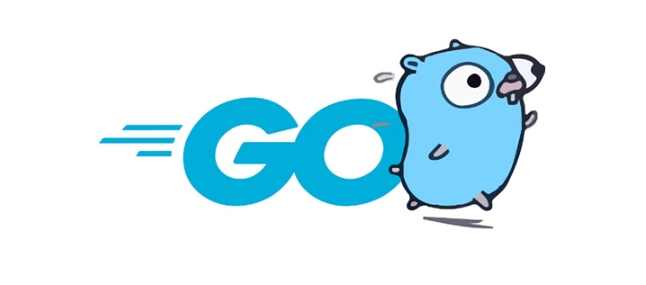進行網絡編程和插座
Go 是進行網絡編程的理想語言,其標準庫和輕量級並發模型使構建高性能網絡服務變得簡單高效。 1. Go 的net 包支持TCP、UDP 等協議,並通過net.Conn 接口統一抽象連接操作。 2. 使用net.Listen("tcp", ":8080") 可創建TCP 服務器,通過listener.Accept() 接收連接,並利用goroutine 並發處理每個連接,實現高並發。 3. TCP 客戶端使用net.Dial("tcp", "localhost:8080") 連接服務器,通過goroutine 發送輸入,主循環讀取響應,實現雙向通信。 4. UDP 編程使用net.ListenUDP 和net.DialUDP,無需建立連接,適用於低延遲場景,但需自行處理丟包與順序問題。 5. 最佳實踐包括合理使用goroutine、設置讀寫超時、處理錯誤、採用TLS 加密以及使用bufio 簡化文本協議處理。掌握Go 的網絡編程模型有助於構建可擴展的後端與分佈式系統,是開發者值得投入的學習方向。

If you're diving into network programming, Go (Golang) is an excellent choice — it's designed with concurrency and networking in mind, making it a natural fit for building scalable, high-performance network services. Whether you're building a web server, API, proxy, or custom TCP/UDP service, Go's standard library and lightweight concurrency model (goroutines) make working with sockets clean and efficient.

Here's a practical guide to get you started with network programming and sockets in Go.
1. Understanding Sockets in Go
In Go, the net package is your go-to for network operations. It supports TCP, UDP, Unix sockets, and even raw IP connections. At its core, Go abstracts low-level socket operations into easy-to-use interfaces.

The two main types of connections:
- TCP : Reliable, connection-oriented (eg, HTTP, SSH)
- UDP : Connectionless, faster but unreliable (eg, DNS, video streaming)
Go treats these as implementations of the net.Conn interface, so you can work with them in a consistent way.

2. Building a Simple TCP Server
Let's create a basic TCP echo server that listens on port 8080 and echoes back any message it receives.
package main
import (
"bufio"
"fmt"
"log"
"net"
)
func main() {
// Listen on TCP port 8080
listener, err := net.Listen("tcp", ":8080")
if err != nil {
log.Fatal("Could not start server:", err)
}
defer listener.Close()
fmt.Println("Server listening on :8080")
for {
// Accept incoming connection
conn, err := listener.Accept()
if err != nil {
log.Println("Failed to accept connection:", err)
continue
}
// Handle each connection in a new goroutine
go handleConnection(conn)
}
}
func handleConnection(conn net.Conn) {
defer conn.Close()
scanner := bufio.NewScanner(conn)
for scanner.Scan() {
message := scanner.Text()
fmt.Printf("Received: %s\n", message)
// Echo back
_, err := conn.Write([]byte("Echo: " message "\n"))
if err != nil {
log.Println("Write error:", err)
return
}
}
}Key points:
-
net.Listen("tcp", ":8080")starts the server. -
listener.Accept()blocks and waits for clients. - Each connection is handled in a goroutine — this is Go's superpower: concurrency made simple .
-
bufio.Scannerreads line-by-line (useful for text protocols).
3. Writing a TCP Client
Now, a simple client to test the server:
package main
import (
"bufio"
"fmt"
"log"
"net"
"os"
)
func main() {
conn, err := net.Dial("tcp", "localhost:8080")
if err != nil {
log.Fatal("Could not connect:", err)
}
defer conn.Close()
// Send user input to server
go func() {
scanner := bufio.NewScanner(os.Stdin)
for scanner.Scan() {
msg := scanner.Text()
_, err := conn.Write([]byte(msg "\n"))
if err != nil {
log.Println("Send error:", err)
return
}
}
}()
// Read response from server
reader := bufio.NewReader(conn)
for {
response, err := reader.ReadString('\n')
if err != nil {
log.Println("Read error:", err)
break
}
fmt.Print("Server: ", response)
}
}This client:
- Connects to the server.
- Sends user input in a goroutine.
- Reads and prints server responses in the main loop.
4. Working with UDP
UDP is connectionless, so you use net.ListenUDP and net.DialUDP .
UDP Server Example:
package main
import (
"fmt"
"log"
"net"
)
func main() {
addr, err := net.ResolveUDPAddr("udp", ":8080")
if err != nil {
log.Fatal(err)
}
conn, err := net.ListenUDP("udp", addr)
if err != nil {
log.Fatal(err)
}
defer conn.Close()
buffer := make([]byte, 1024)
for {
n, clientAddr, err := conn.ReadFromUDP(buffer)
if err != nil {
log.Println("Read error:", err)
continue
}
fmt.Printf("Received from %s: %s\n", clientAddr, string(buffer[:n]))
// Echo back
_, err = conn.WriteToUDP([]byte("Echo: " string(buffer[:n])), clientAddr)
if err != nil {
log.Println("Write error:", err)
}
}
}Note: UDP doesn't guarantee delivery or order — use it when speed matters more than reliability.
5. Best Practices and Tips
- Use goroutines wisely : Each connection in a new goroutine is fine for moderate loads, but for high-scale systems, consider worker pools or connection limits.
- Set timeouts : Use
conn.SetReadDeadline()andconn.SetWriteDeadline()to avoid hanging connections. - Handle errors : Network code fails — always check for errors on
Read,Write,Accept, etc. - Use TLS for security :
tls.Listen()andtls.Dial()work just like theirnetcounterparts for encrypted communication. - Prefer
bufiofor line-based protocols : It simplifies reading text streams.
Final Thoughts
Go makes network programming accessible and performant. With minimal code, you can build robust servers and clients. The combination of the net package, goroutines, and channels lets you write concurrent network apps without the complexity of threading or callbacks.
Whether you're building microservices, proxies, or real-time systems, Go's approach to sockets and networking gives you both control and simplicity.
Basically, if you're serious about backend or distributed systems, mastering Go's network model is time well spent.
以上是進行網絡編程和插座的詳細內容。更多資訊請關注PHP中文網其他相關文章!

熱AI工具

Undress AI Tool
免費脫衣圖片

Undresser.AI Undress
人工智慧驅動的應用程序,用於創建逼真的裸體照片

AI Clothes Remover
用於從照片中去除衣服的線上人工智慧工具。

Clothoff.io
AI脫衣器

Video Face Swap
使用我們完全免費的人工智慧換臉工具,輕鬆在任何影片中換臉!

熱門文章

熱工具

記事本++7.3.1
好用且免費的程式碼編輯器

SublimeText3漢化版
中文版,非常好用

禪工作室 13.0.1
強大的PHP整合開發環境

Dreamweaver CS6
視覺化網頁開發工具

SublimeText3 Mac版
神級程式碼編輯軟體(SublimeText3)
 c++開源函式庫有哪些
Apr 22, 2024 pm 05:48 PM
c++開源函式庫有哪些
Apr 22, 2024 pm 05:48 PM
C++ 提供豐富的開源函式庫,涵蓋以下功能:資料結構和演算法(標準範本庫)多執行緒、正規表示式(Boost)線性代數(Eigen)圖形使用者介面(Qt)電腦視覺(OpenCV)機器學習(TensorFlow)加密(OpenSSL)資料壓縮(zlib)網路程式設計(libcurl)資料庫管理(sqlite3)
 C++ 函數在網路程式設計中如何處理 DNS 查詢?
Apr 27, 2024 pm 06:39 PM
C++ 函數在網路程式設計中如何處理 DNS 查詢?
Apr 27, 2024 pm 06:39 PM
C++標準函式庫提供了函式來處理網路程式設計中的DNS查詢:gethostbyname():根據主機名稱尋找主機資訊。 gethostbyaddr():根據IP位址尋找主機資訊。 dns_lookup():非同步解析DNS。
 Java網路程式設計有哪些常見的協定?
Apr 15, 2024 am 11:33 AM
Java網路程式設計有哪些常見的協定?
Apr 15, 2024 am 11:33 AM
Java網路程式設計中常用的協定包括:TCP/IP:用於可靠資料傳輸和連線管理。 HTTP:用於Web資料傳輸。 HTTPS:HTTP的安全版本,使用加密傳輸資料。 UDP:用於快速但不穩定的資料傳輸。 JDBC:用於與關聯式資料庫互動。
 Java網路程式設計如何使用UDP進行無連線通訊?
Apr 15, 2024 pm 12:51 PM
Java網路程式設計如何使用UDP進行無連線通訊?
Apr 15, 2024 pm 12:51 PM
UDP(用戶資料報協議)是一種輕量級的無連接網路協議,常用於時間敏感的應用程式。它允許應用程式在無需建立TCP連接的情況下發送和接收資料。範例Java程式碼可用於建立UDP伺服器和用戶端,伺服器監聽傳入資料封包並回應,客戶端傳送訊息並接收回應。此程式碼可用於建立聊天應用程式或資料收集系統等實戰案例。
 scratch和python區別
Apr 20, 2024 pm 11:59 PM
scratch和python區別
Apr 20, 2024 pm 11:59 PM
Scratch 和 Python 的差異在於:目標客群:Scratch 是針對初學者和教育環境,而 Python 則是針對中階到高階程式設計師。語法:Scratch 使用拖放積木介面,而 Python 使用文字語法。功能:Scratch 注重易用性和視覺化編程,而 Python 提供更高級的功能和可擴充性。
 python可以做哪些項目
Apr 11, 2024 am 03:43 AM
python可以做哪些項目
Apr 11, 2024 am 03:43 AM
Python 可用於以下應用:網站開發(Django、Flask)資料科學(NumPy、Pandas)人工智慧和機器學習(TensorFlow、Keras)腳本自動化桌面應用程式(PyQt、tkinter)遊戲開發網頁程式設計(asyncio、Tornado)資料視覺化(Matplotlib、Seaborn)
 C++ 函式在網路程式設計中如何實作網路防火牆?
Apr 26, 2024 pm 04:18 PM
C++ 函式在網路程式設計中如何實作網路防火牆?
Apr 26, 2024 pm 04:18 PM
使用C++函數可以輕鬆在網路程式設計中實現網路防火牆,具體步驟如下:編寫檢查封包有效性的函數:驗證來源IP位址是否允許驗證連接埠號碼是否允許驗證封包類型是否允許編寫處理封包的函數:允許有效資料包透過丟棄無效資料包來建立防火牆物件並配置允許的IP位址、連接埠號碼和資料包類型監聽網路流量並處理收到的資料包
 c語言能做什麼工作
Apr 13, 2024 pm 06:24 PM
c語言能做什麼工作
Apr 13, 2024 pm 06:24 PM
C語言主要用於軟體開發領域,可從事的工作包括:作業系統開發:作業系統核心、驅動程式和工具嵌入式系統編程:微控制器和感測器韌體遊戲開發:遊戲引擎、邏輯和圖形渲染網路編程:伺服器、客戶端和協定資料庫管理:DBMS和資料庫操作雲端運算:基礎設施、虛擬化和分散式應用程式人工智慧:機器學習演算法、視覺和自然語言處理科學計算:資料分析、數值模擬和視覺化







